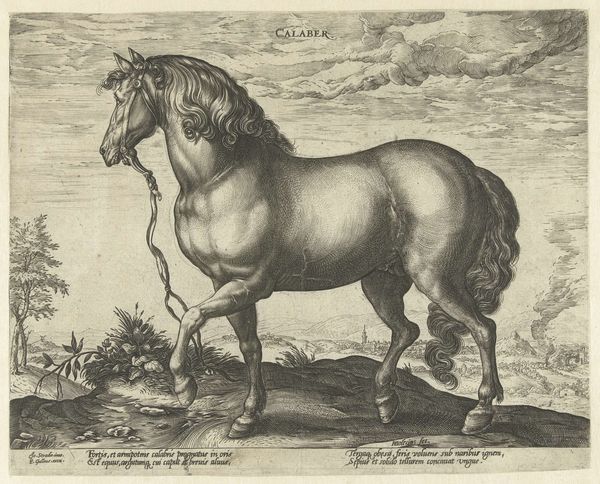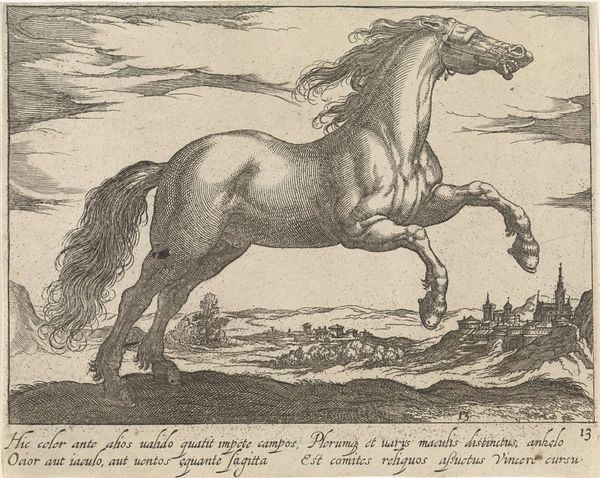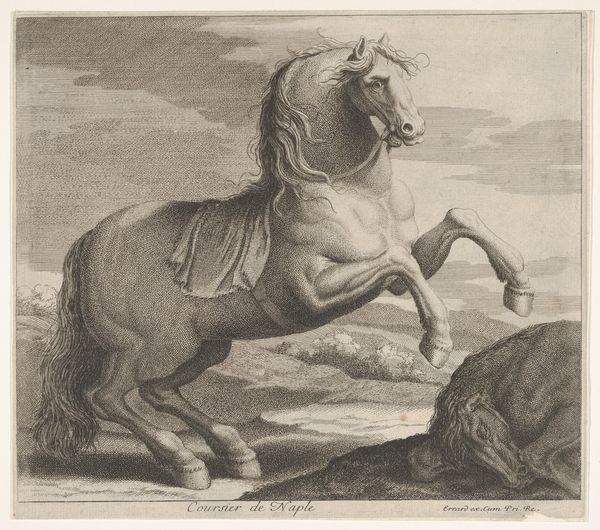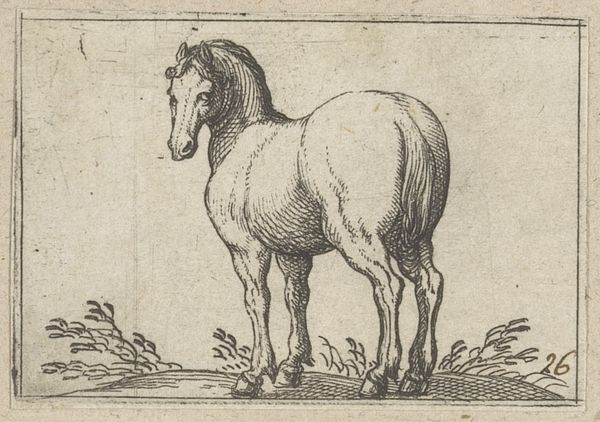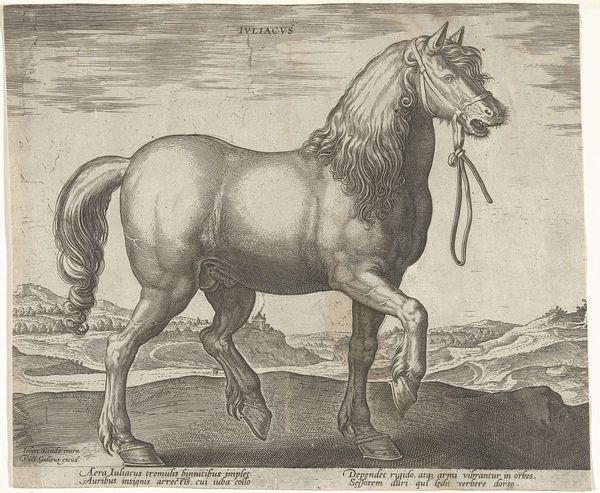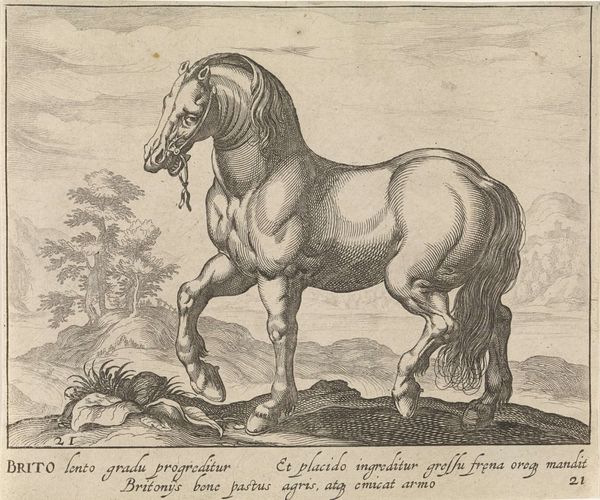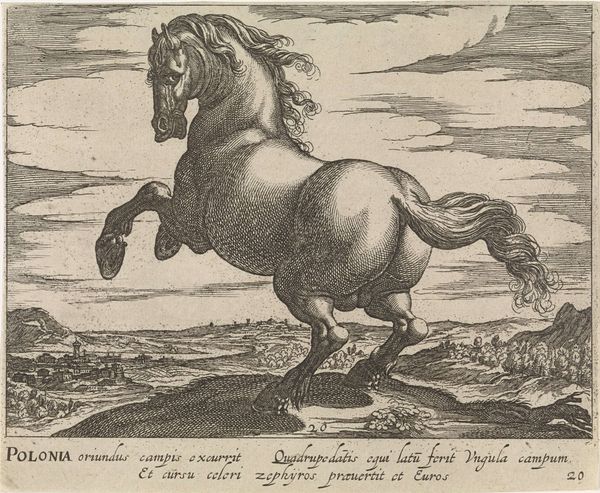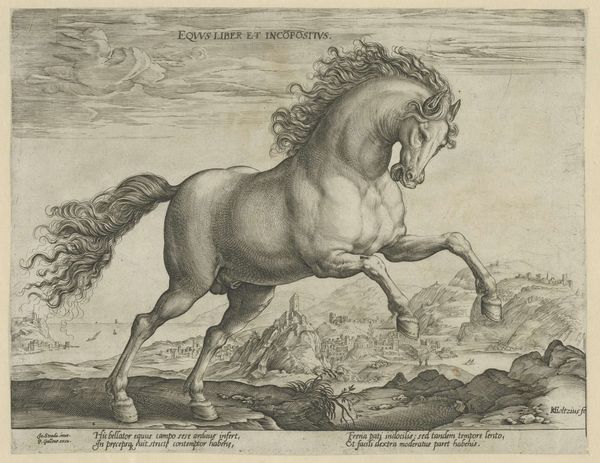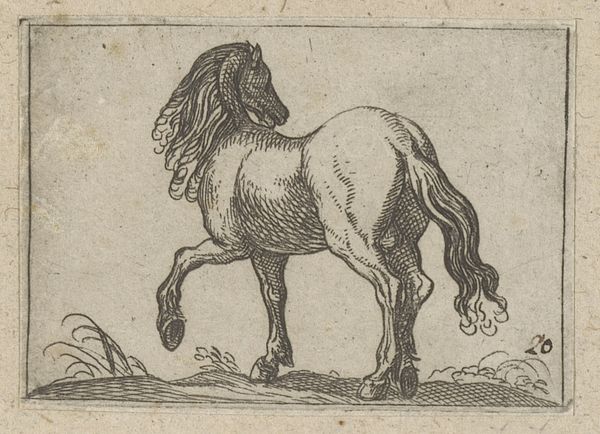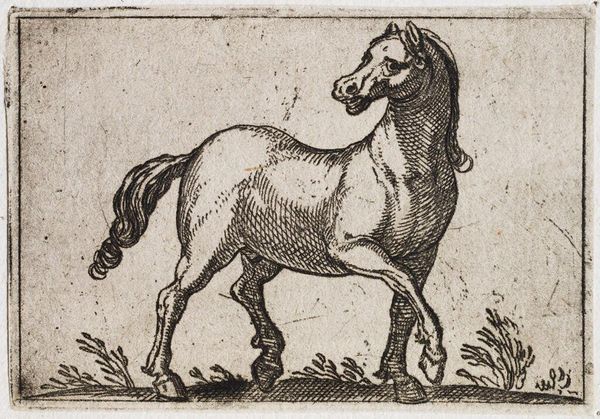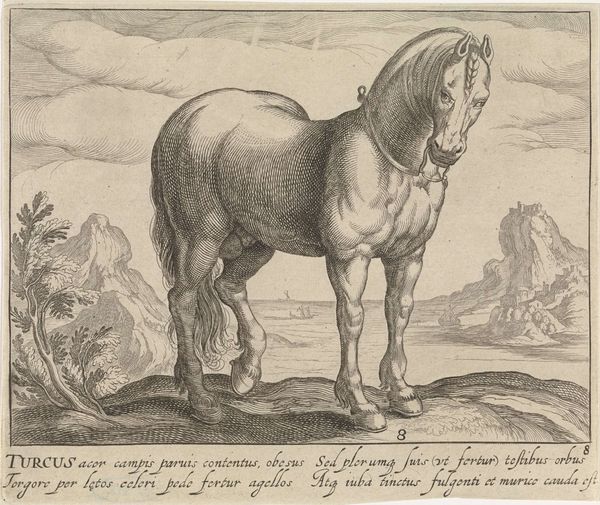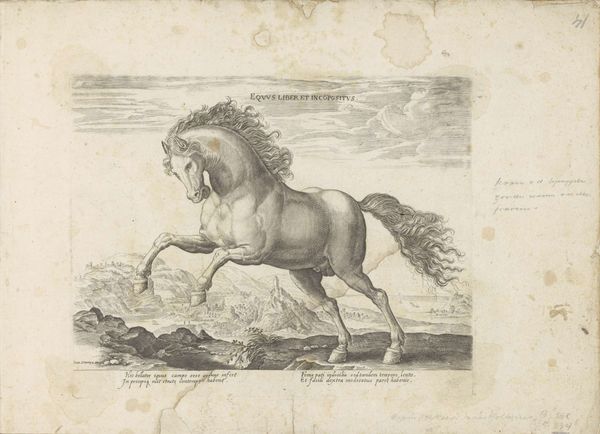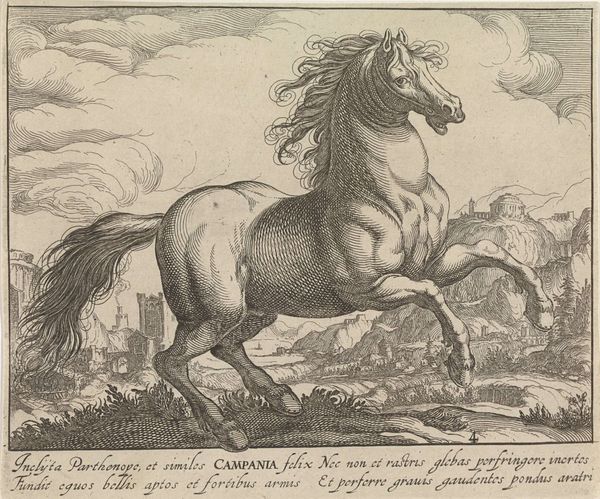
etching
#
baroque
#
animal
#
etching
#
landscape
#
figuration
#
horse
Dimensions: height 118 mm, width 110 mm
Copyright: Rijks Museum: Open Domain
Curator: "Paard," which translates to "horse," is an etching created by Moyses van Wtenbrouck sometime between 1645 and 1660. The scene features a dramatically posed horse set against a landscape. Editor: The horse itself has this incredibly haughty and baroque presence—it fills most of the frame, nearly eclipsing the town behind it. The linear work creates the drama of light and dark. Curator: Indeed. The lines and tonality were etched into the plate, which itself reflects the means of production of prints as more available artistic endeavors at the time. This challenges our notions of originality and aura associated with fine art when the etching process facilitated some form of distribution and consumption. What are your thoughts? Editor: From a formalist standpoint, I notice the incredible detail in the horse's musculature, and flowing mane. Wtenbrouck really used line work to describe the horse's powerful physique but the clouds and buildings look underdeveloped when placed beside it. How do you interpret that choice, of emphasis on this creature? Curator: Perhaps it's connected to the economy and the place of horses in Dutch society, you know? These were symbols of wealth and industry— think of the transport, agriculture, and even military power. Etchings themselves had a market function as luxury items for display and were made available for middle-class patrons. Editor: You highlight the influence of society and its economic footprint on a medium, which contrasts from how the animal embodies aesthetic standards: its form, gesture, even emotional tenor communicates vitality and command, wouldn't you agree? It nearly adopts the scale of antiquity figures. Curator: I think that is a stretch, although, what is clear is the interaction of labor, consumption, and the landscape through its presence of use; those all give us insight to both artist intention, function of the artwork, and how that all existed together in 17th century Dutch Republic society. Editor: Fair enough! In conclusion, Wtenbrouck’s Paard offers more than just a noble animal, with both its visual power, and the implications of the labor involved, for that time, in creating such an intricate form.
Comments
No comments
Be the first to comment and join the conversation on the ultimate creative platform.
